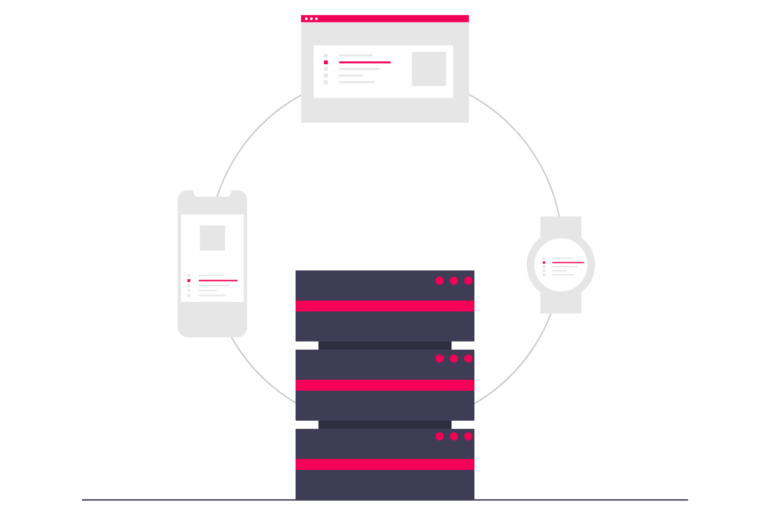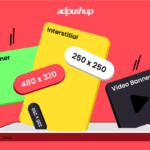As long as we are talking about Media Buying, a lot of people might agree that it’s difficult to understand the difference between Programmatic and Real Time Bidding. At first glance, the two might seem quite similar, but to really make the best of these two worlds, it’s important to fathom the subtle differences and nuances where the two go their separate ways. In fact, not all programmatic buying kinds have the RTB system incorporated.
What Do We Mean by Programmatic Buying?
Attempting to define Programmatic Buying, we might say that it is a kind of automated ad network, that runs based on a schedule, a program, or an algorithm.
In fact, programming buying has been growing at a fast pace. In 2021, programmatic ad spends reached a whopping 418.4 billion U.S and it is projected to grow. Thus, it is high time marketers should leverage this technology.
Therefore, those who are into the job of media buying, have the responsibility of customizing campaigns concerning brand programmatic advertisements, going into negotiations with the publishers, and maneuvering advertising in such a way that the profit is maximized.
These days, media buying essentially takes place following 2 methods –
Programmatic Buying
This refers to an automated process, by which ad spaces are bought and sold so as to display advertisements to users, regarding topics that they might feel interested in.
Programmatic Direct Purchase
Here, the publisher and the advertisers negotiate, and the latter purchases ad spaces from the former.
So in effect, in the world of digital advertising, programmatic buying refers to a process of buying ad space at large aided by machine technology and data-driven software running on complex algorithms.
One of its most interesting features is that it allows hyper-personalised targeting, coupled with agile messaging throughout the world of paid advertising. The fact that it has completely done away with human intervention, ensures that there is no scope for human errors.
What are the Primary Features of Programmatic Buying, RTB?
There are certain rather important features of Programmatic Buying and it is necessary to be aware of these features if one needs to get a grasp of what RTB Programmatic Buying really is:
Artificial Intelligence or AI
Various methods of AI like deep learning and machine learning often find use in programmatic buying and that is what makes it all the more interesting. The job of machine learning here is to inspect forms of data, learn from them and make informed decisions or predictions based on the learnings. The predictions might include estimation of ROI, the probable success of a marketing campaign and so on.
Machine learning is a continuous process where the machine keeps on learning over time, modifying itself with the transforming market dynamics and thus, also has a great impact on the performance of the campaign. Let us look into some factors that the machine considered while deciding on programmatic buying of ads:
- SIze of Creatives
- Time Partition Data
- Geolocation Data
- OS Data
- Browser Data
- Gender related Data
- Device Related Data
- Placement Related Data
- Data related to Supply Type
Deep Learning
With the help of Deep Learning, the machine gets to learn about its mistakes and learn from them. Accordingly, it connects the dots and makes decisions that human beings might not even care to consider.
It also works towards building a more accurate database and profile of consumers and making decisions on the foundation of actual usage rather than what might have been proposed.
So, programmatic buying actually provides valuable insights along with providing valuable data, which prove to be highly useful in the long run.
With the help of these insights and datasets, advertisers can modify their ad targeting strategy and make sure that the ads they are displaying are consistent and effective.
What Really is RTB or Real Time Bidding?
To put it simply, RTB or Real Time Bidding is a method of programmatic buying. Contrary to people’s belief, RTB is not the only way of buying media programmatically. It is true, however, that as much as 90% or more of programmatic buying is done through RTB. But still, not all advertisers use this for purchasing.
1. Open Marketplaces (RTB)
In open marketplaces, advertisers compete by bidding for ad space and the chance to show their ads to people.
2. Private Marketplaces
Private marketplaces are exclusive. Advertisers get an invite to place their ads after publishers offer them ad space options.
3. Preferred Deals
Preferred deals give special treatment. Advertisers and publishers work together to decide where and when ads should appear.
4. Programmatic Guaranteed:
Programmatic guaranteed promises a set number of times your ads will be shown. No bidding; it’s all agreed upon in advance.
Why is RTB Programmatic Buying the Best?
So as we have already discussed, RTB is basically an online ad exchange that allows purchase and sale of impressions in real time. The entire exchange process takes place within a millisecond i.e. as the page loads.
Essentially, RTB Programmatic Buying finds use for both publishers as well as advertisers. Marketers find it exceptionally useful considering that their ads reach the correct target audience and the number of wasted impressions is also decreased. Publishers, on the other hand, find that the value of their space has increased considerably and the pricing, along with the direct space strategy is also improved.
Ad Exchanges
Ad exchange is online marketplaces where publishers sell ad space, and advertisers bid to display their ads, with the highest bidder winning the spot.
SSP (Supply-Side Platform)
A supply side platform is for publishers to organize and set prices for their ad space, also known as yield managers.
DSP (Demand-Side Platform)
A demand side platform is for digital ad buyers to control multiple ad networks and data exchanges in one place.
Advertising Agency Buying/Trading Desks (ATD)
These are the media buyers and resellers that handle programmatic media independently.
Ad Networks
Ad networks are the platforms that gather ad space from publishers, categorize it, and sell it to advertisers in bulk.
Ad Verification and Brand Protection Platforms
These are the platforms that ensure ads are placed appropriately by investigating audiences, media placements, and advertisers.
How to Use RTB Programmatic Buying in the Most Effective Way?
To make the most of RTB (Real-Time Bidding), advertisers and publishers should follow these best practices:
For Publishers
Let’s first understand how publishers can use RTB programmatic buying.
1. Define Inventory and Pricing Strategy
Clearly outline your available ad space and pricing strategy to attract the right advertisers.
2. Choose the Right Platforms and Partners
Partner with RTB platforms and advertisers that match your content and audience.
3. Implement Quality Control Tools
Ensure the quality of ads displayed on your platform by using ad quality control tools.
4. Apply Data Protection Measures
Comply with data protection rules to maintain user trust and data integrity.
5. Monitor and Optimise Fill Rate
Keep an eye on your ad fill rate and make adjustments to maximize your revenue potential.
By following these practices, advertisers and publishers can leverage RTB effectively while minimizing potential risks and ensuring a successful advertising ecosystem.
For Advertisers
Now let’s take a look how RTB programmatic buying can be used by advertisers.
1. Set Clear Goals and KPIs
Clearly define what you want to achieve and measure success with specific key performance indicators (KPIs).
2. Choose the Right Platforms and Partners
Select the most suitable RTB platforms and partners that align with your advertising objectives.
3. Implement Fraud Prevention Tools
Protect your campaigns from fraudulent activity by using appropriate fraud detection and prevention tools.
4. Apply Data Protection Measures
Safeguard user data and privacy by adhering to data protection regulations and best practices.
5. Monitor and Optimize Bids
Continuously assess your bidding strategies and adjust them to improve campaign performance.
How Much Does it Cost?
Programmatic advertising costs can differ and are mainly determined by CPM (Cost Per Mile). The CPM price can go up or down depending on a few things like who you want to show your ads to, how many ads you want to run, your advertising budget, and how long you want your campaign to last.
Here’s a simple example: If you want to reach lots of people, the CPM (the cost for every 1,000 ad views) is usually lower than if you’re trying to reach only a specific group of people. Also, things like the way you choose your target audience and set up your ads can affect how much you pay. In programmatic advertising, you pay for ads through a process called RTB (Real-Time Bidding).
Conclusion
RTB (Real-Time Bidding) is a part of a larger technology called programmatic advertising. It’s similar to how a lemon is sour, and sourness is a characteristic of lemons. But remember, just like not everything sour is a lemon, not everything in programmatic advertising is RTB. They’re connected, but programmatic advertising includes various other methods and strategies beyond RTB. So this was all you needed to know about RTB programmatic buying. Thanks for reading!
Frequently Asked Questions
RTB (Real-Time Bidding) in programmatic advertising is an auction-based system where advertisers bid in real-time to display their ads to specific audiences, allowing for precise targeting and efficient ad placement.
RTB (Real-Time Bidding) is an auction-based, real-time ad buying method, while programmatic guaranteed involves pre-negotiated deals with fixed prices and reserved ad inventory, ensuring ad placements on specific websites.

Nidhi Mahajan is a content author with a remarkable talent for ad tech. With a deep understanding of the ad tech industry and a sharp focus on detail, she excels in crafting insightful articles and compelling narratives. Nidhi is dedicated to making the complexities of ad tech more accessible to all through her clear and informative writing.



![Top 12 Ad Networks in India Every Publisher Should Know [2024 Edition] Indian Ad Networks](https://www.adpushup.com/blog/wp-content/uploads/2019/09/undraw_Note_list_re_r4u9-270x180.png)



